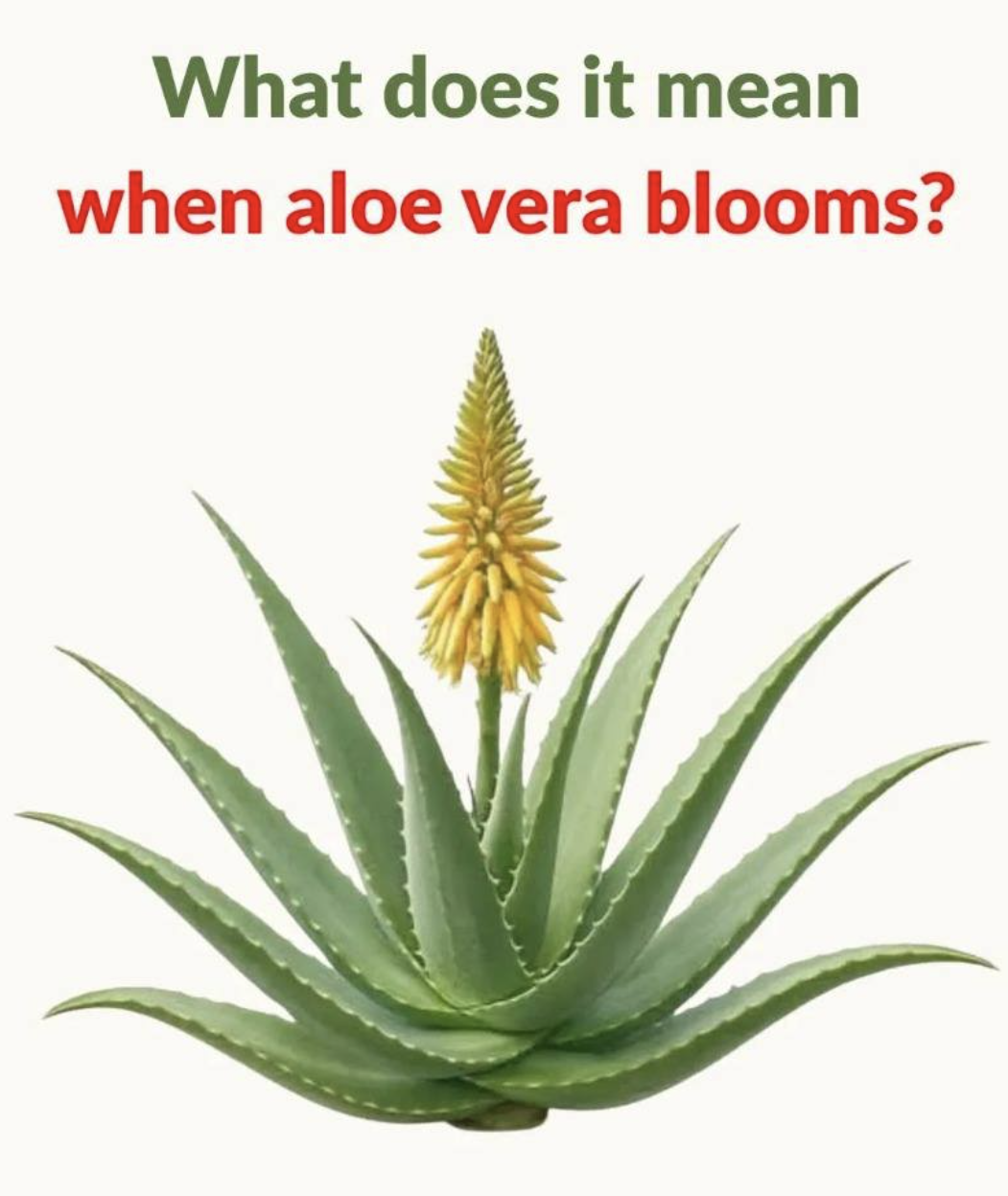What Does It Mean When Aloe Vera Blooms?
Aloe vera, cherished for its healing properties and low-maintenance nature, often surprises its owners with a stunning display: a tall flower stalk emerging from its center, culminating in a cluster of vibrant flowers. This seemingly rare event holds deeper meaning than mere botanical curiosity. It’s a window into the plant’s health, its environment, and its life cycle.
Understanding Aloe Vera Blooming
The blooming process involves the production of a tall inflorescence, a flower stalk, from the plant’s heart. This stalk supports a cluster of tubular flowers, typically yellow, orange, or red, depending on the specific aloe vera species. These flowers, in their natural habitat, are often pollinated by hummingbirds and insects.
The Significance of Aloe Vera Blooms
Several factors contribute to aloe vera flowering, and the event itself carries multiple implications:
1. Mature Plant Health
Flowering is a strong indicator that your aloe vera has reached maturity, typically around 3-4 years of age. A robust base, thick leaves, and the presence of offshoots (“pups”) are further signs of a healthy, mature plant ready for blooming.
2. Ideal Growing Conditions
A blooming aloe vera suggests it’s receiving the optimal growing conditions:
Abundant sunlight (at least 6 hours of direct sunlight daily)
Well-draining soil (avoid moisture-retentive soil to prevent root rot)
Moderate watering (allow the soil to dry completely between waterings)
Consistent temperature (warm days and slightly cooler nights)
3. Environmental Stress (A Possible Trigger)
Interestingly, mild environmental stress, such as a brief dry spell or a slight temperature fluctuation, can sometimes trigger flowering. This mimics the conditions in its native arid environment, prompting the plant to prioritize reproduction.
4. Natural Reproduction
The flower stalk facilitates the plant’s natural reproduction through seed production. While aloe vera propagation is more commonly achieved through pups, the flower stalk serves its evolutionary purpose.
Cultural and Symbolic Meaning
Across various cultures, the blooming of aloe vera holds symbolic significance:
A sign of good luck and prosperity
A symbol of longevity and resilience
A rare and celebrated event
A Step-by-Step Guide to Encourage Aloe Vera Blooming
If you’re eager to witness your aloe vera flower, or if it’s already begun blooming and you wish to support the process, follow these steps:
Step 1: Ensure Maturity
Patience is key. Aloe vera usually doesn’t bloom until it’s at least 3-4 years old. Look for indicators of maturity such as a sturdy base, thick leaves, and the emergence of pups.
Step 2: Provide Ample Sunlight
Position your aloe vera in a sunny location with at least 6 hours of direct sunlight per day. Outdoors in warm climates or near a south-facing window indoors are ideal.
Step 3: Use Well-Draining Soil
Utilize a cactus or succulent mix designed for excellent drainage. Avoid soils that retain moisture, as these can lead to root rot and hinder blooming.
Step 4: Water Sparingly
Allow the soil to dry completely between waterings. Water only when the top 2 inches of soil are dry, usually every 2-3 weeks. Overwatering is a significant obstacle to flowering.
Step 5: Mimic Natural Temperature Fluctuations
Aloe vera thrives in warm daytime temperatures (70-85°F or 21-29°C) and cooler nighttime temperatures. This temperature variation, particularly if grown outdoors, can help induce flowering.
Step 6: Fertilize Moderately
Use a diluted cactus fertilizer (low in nitrogen) once every 1-2 months during the spring and summer growing seasons. Avoid fertilizing during winter dormancy.
Step 7: Respect Winter Dormancy
Flowering often occurs in late winter or early spring, following a period of dormancy. During winter, reduce watering and provide cooler temperatures to mimic natural conditions.
Caring for Your Blooming Aloe Vera
Once your aloe vera begins to bloom, take these steps:
Support the Flower Stalk
The stalk can grow quite tall (up to 2-3 feet). Provide support using a stake or soft ties to prevent the stalk from breaking.
Enjoy the Blooms
The flowers typically last several weeks and attract pollinators. Avoid removing them unless they start to wilt or dry.
Prune After Blooming
After the flowers dry and the stalk turns brown, cut it at its base. This allows the plant to redirect energy towards leaf growth and pup production.
Aloe Vera After Flowering
Following the bloom, your aloe vera may produce more pups (baby aloe plants). Some species may experience a temporary slowdown in leaf growth. The pups can be carefully separated and repotted to propagate new aloe vera plants.
Final Thoughts
A blooming aloe vera is a testament to your plant care and a beautiful reward for your patience. More than just a visual treat, it’s a celebration of a healthy and thriving plant. Cherish this rare event, and continue to nurture your aloe vera for years of growth and potential blooms to come.
